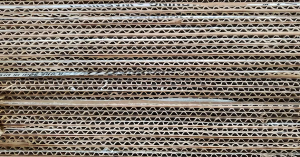Recycling paper products is an efficient way to save money and encourage the use of renewable energy sources. Not only that, but it also contributes to keeping our environment clean and green – something you can be proud of when partaking in.
Cardboard is an indispensable packaging material used in virtually every industry. It can be utilized to ship and package various goods such as electronics, culinary supplies, shoes, lamps and much more.
Given this info, you can also assume that recycling cardboard is an effective way to reduce landfill accumulation – a dire problem in the world. Not only does it conserve resources and minimize pollution, but it also creates jobs while saving money on disposal fees.
Cardboard can be recycled at most waste recycling centers and collection facilities. But there are a few steps you should take in order to make sure it is suitable for the process.
Sorting
Recycling paper or paper materials (like the various types of “board”) is a method that reduces the amount of waste sent to landfills. Reusing it saves more than nine cubic yards of landfill space per ton recycled, providing an important environmental advantage.
The initial step in recycling these items is sorting them. Sorting allows for reuse and recycling of this valuable resource as well as getting rid of definite waste.
Once it has been separated, it is then sent to a paper mill for pulping. This involves breaking down the fibers of the material using water and chemicals before mixing it with wood chips to solidify and become stronger.
After pulping (which I’ll go into later) a thorough filtering process is employed to eliminate all foreign ingredients and contaminants. This step is vital because it ensures the material doesn’t contaminate other recyclable materials.
By the way, one of the main advantages of recycling is that it helps preserve trees. Producing paper products requires 15 billion trees to be felled annually, but repurposing, reusing and recycling cardboard reduces this number significantly.
Cardboard is widely regarded as one of the most eco-friendly packaging materials because it’s so easily sorted into “recyclable” or not. These paper products are a highly renewable resource – meaning that it can be recycled multiple times before needing replacement.
Shredding
The recycling process begins with sorting (as stated above) which is done according to type of the paper material. The two primary varieties are boxboard and corrugated board.
Both can be recycled according to certain guidelines and can often be found in supermarkets and other retail outlets. Before recycling it, be sure to sort out any tape, labels or stickers from it so it can be shredded properly.
Once sorted, the material is sent to a pulper where it will be mixed with water to break down the material fibers into small pieces. After that, it is filtered through a filtering method to eliminate any foreign ingredients or contaminants.
After filtering, the shredded paper product will be processed into slurry that can be reused as new packaging material. This slurry then undergoes several processes such as vacuum rolling, vibrating conveyors and steam heating before being dried.
Once it has gone through all these processes, it will be sent to a reprocessing plant for further treatment and production into new packaging. Since reprocessed paper products contain around 90% water, additional treatment is necessary in order to achieve an excellent product with long durability.
Pulping
Paper products can be made from trees or recycled boxes and come in either corrugated or paperboard form, all which can be pulped and reused to almost 100%. The former is a stiff and durable paper available in various colors; on the other hand, paperboard is thinner and less sturdy.
Wood pulp, the most common source of cellulose for making paper, is produced from wood that has been steamed and treated with various chemicals. This breaks down lignin – an intricate substance that holds the cellulose fibers together – so you can produce paper from scratch with much greater ease.
Kraft and sulfite pulping processes are two popular pulp-producing processes used for paper manufacturing. The kraft process was invented in 1870 and produces strong, unbleached papers that can be used for bags or other products but often further processed to form corrugated cardboard.
It will be sent to a pulper after being sorted, where any packing tape or stickers will be removed and combined with water to create a pulp. This pulp must then go through several stages of pressing, drying, and mixing to achieve the proper consistency for rolling into large sheets of cardboard that can either be sent to be made into new products or put back into boxes.
Sulfite pulping, first introduced into the paper industry in the 19th century, has a long-standing reputation for producing quality papers. Additionally, this method of pulping requires significantly less energy than mechanical alternatives and thus contributes to environmental friendliness.
Sulfite pulping is a chemical process in which granular material, typically sodium and calcium hypochlorites, is added to low consistency pulp slurry. This chemical treatment disintegrates the lignin present in the pulp while leaving behind only cellulose in its bulk form.
The next step in the pulping process is de-inking. This step involves placing the pulp into a device called a flotation machine, which uses chemicals to separate any dyes or ink from it. It’s an effective way of eliminating contaminants that cannot be eliminated through other processes.

Filtration
Filtration is a vital step in reusing cardboard. This process uses mechanical or chemical methods to remove foreign objects such as metal and plastic from the pulp, allowing it to be recycled for making new boxes. If this step is missed, the materials may be useless or rendered improbably for re-use.
The process begins by mixing together shredded cardboard with water and chemicals, which is then filtered through a sieve. After the pulp has been removed from the filter, it is dried to create new sheets of cardboard.
Cardboard comes in many forms, such as corrugated cardboard and paperboard. Both of these can be recycled at most waste or cardboard recycling centers. However, not all cardboard is recyclable; check with your local authority to see which types are accepted where you live.
Business owners should collect cardboard throughout their office or facility and prepare it for recycling. Doing so saves your company money, time, and space since it can be recycled instead of being thrown away.
Once it has been collected, sort through it and discard any items that cannot be recycled. These may include food-stained containers and cardboard coated with wax or other substances.
Recycling offers several advantages over production from virgin fibers, including using less water and producing fewer greenhouse gasses and pollutants like sulfur dioxide which reduce our impact on the environment. Paper products create jobs and support economic growth by stimulating employment opportunities in the local community.
Drying
Drying cardboard is the final and most essential step in the recycling process. Wet cardboard cannot be easily recycled and most paper mills and recycling facilities will refuse to accept it.
Second, wet cardboard can damage machines used to sort recyclables. When exposed to moisture, its fibers become weaker, making it much more challenging for these machines to function correctly.
Finally, wet paper can clog recycling lines at facilities using these machines. Even a small piece of wet paper may cause the line to stay down for an extended period of time, creating issues for everyone involved.
To avoid this issue, never put wet paper products into your recycling bin. Allow it to dry completely before adding it or placing it in a separate bag for recycling.
General Tips
Before recycling cardboard, it’s best to flatten it and take out any packaging materials like plastic, polystyrene, or tape that could prevent recycling. Doing this helps guarantee that cardboard materials are collected more efficiently as well as safely without possibility of contamination or rot.
The majority of towns have curbside recycling programs that collect all different kinds of cardboard simultaneously. Contact your local community to find out the specifics and how it operates.
Even though recycling takes a long time and is difficult, most trees can have up to 98% of their material recycled, which makes them a huge asset in the fight against the unavoidable effects of global warming. Consider recycling before you throw any cardboard away, or even give it a shot yourself. It just might be the next step in transforming the course of human history.





